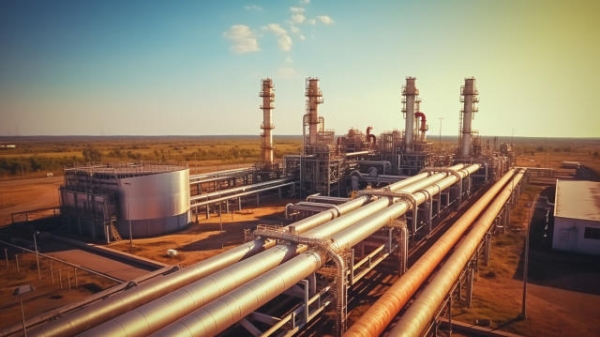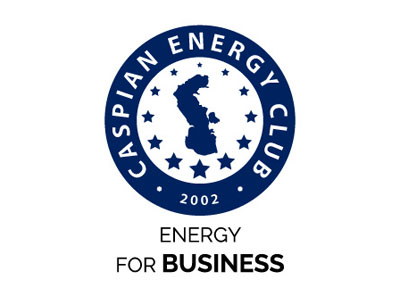Natural gas accommodates about 24% of the world’s total energy demand and, thus, just as oil, plays a very important role in meeting global energy needs. Natural gas has accounted for almost a third of the growth in global energy consumption over the past decade, and its consumption is also expected to increase in the future. Natural gas is mainly used for heating homes and commercial buildings, cooking and generating electricity, as well as in the petrochemical industry.
Many of the products we use every day, such as cell phones, cosmetics, sunglasses, computers, medicines and fertilizers for agriculture, are produced using natural gas as a feedstock. Natural gas is transported by pipeline or cooled and compressed to produce LNG, which is transported by LNG carriers. Economic growth, prices for alternative energy sources, weather, temperature, adaptation to the climate change and measures to mitigate its consequences – these are all factors affecting the demand for gas.
Using gas instead of coal to generate electricity can lead to a significant reduction in greenhouse gas emissions. Europe and the rest of the world use a lot of coal to generate electricity. When generating electricity, gas emits about half as much CO2 as coal. Therefore, replacing coal with gas in electricity production is a simple, efficient and cheap way to quickly reduce greenhouse gas emissions and improve air quality.
In 2019, the EU managed to reduce CO2 emissions from electricity generation by 42 million tons, replacing coal with gas. Just for comparison, 42 million tons of CO2 correspond to about 80% of total CO2 emissions in Norway.
Gas is also a good partner for renewable energy. Unlike hydroelectric power, other renewable energy sources such as solar and wind cannot be stored and are therefore less flexible. In the absence of efficient energy storage capabilities, gas can produce energy when the sun is not shining and the wind is not blowing.
As Europe uses more and more renewable energy sources, it will need the flexibility that gas can provide to balance fluctuations in energy supply and provide consumers with a reliable electricity supply.
High liquidity leads to extreme vulnerability of the natural gas market in case of its shortage. Any - political, country, technical, environmental risks lead to an increase and subsequent high price volatility. If we add to this a high cost of exploration and development of natural gas fields, as well as insufficient development (relative to the oil market) of spot gas trade, it becomes clear that the EU’s sanctions policy to limit Russian gas supplies will result in a change of export vectors and remodeling of their marketing component on the one hand, and lead to the construction of new infrastructure and stimulation of new supplies on the other.
Traditional suppliers like Norway (25%) and Algeria (11%) will have to compensate for the gradually outgoing 39% of the Russian supply segment, adding supplies from Azerbaijan and new LNG terminals. Russian Gazprom will have to redirect supplies to Asia, which is already happening. Under a bilateral long-term contract between Gazprom and CNPC the volume of gas exports to China via the Power of Siberia (‘Sila Sibiri’) gas pipeline increased by 60.9% in the period from January to July 2022, the company’s website reported on August 1.
At the same time, in July, deliveries to China went beyond the daily contract volumes, and the historical record of the daily export volume was updated three times.
There is no gas shortage in the EU. Moreover, there is even an overabundance of gas and gas storage facilities continue to fill up.
The decline of global gas demand made about 35 billion cubic meters within a 7-month window compared with the same period in 2021. Total consumption of gas in the EU countries decreased by 31 billion cubic meters, and exports to non-CIS countries fell by 34.7% and amounted to 75.3 billion cubic meters. “The reduction of gas consumption in the EU has become a key factor in the decline of global demand,” Gazprom believes.
Floating liquefied gas terminals are being installed quickly (several of them will be operational by winter, including in Estonia, Finland, the Netherlands, Germany, and a dozen more will be ready in 1-2 years).
Thirdly, reserves of coal-fired power plants are tapped to be able to turn off gas-fired power plants if necessary and thereby save gas (in some European countries, most of the electricity is produced from gas).
Azerbaijan increased gas supplies to Europe already this spring, and in July the European Commission signed a memorandum of understanding with Azerbaijan on doubling the import of Azerbaijani natural gas to at least 20 billion cubic meters per year by 2027. The export of gas volumes, declared at customs, from Azerbaijan in the first half of 2022 amounted to 11 billion 364 million 844.71 thousand cubic meters, which is 9.5% higher than in January-June last year, the State Customs Committee (SCC) told Interfax-Azerbaijan. Gas supplies accounted for 40.26% of Azerbaijan’s total exports during the reporting period (18% in January-June 2021). The export value of declared gas from Azerbaijan amounted to $7 billion 440 million 434.54 thousand (an increase of 4.7 times).
Algeria has recently concluded agreements with Italy to increase gas supplies through the Transmed gas pipeline by the end of the year. Algeria became the first supplier to Italy, getting ahead of Russia after the invasion of Ukraine.
Since the beginning of 2022, Algeria has delivered 13.9 billion cubic meters to Italy, exceeding the previously agreed volumes by 113%.
Algeria is the first gas exporter in Africa and meets about 11% of the Europe’s needs.
Thus, any peretrubation in the global energy market emphasizes, first of all, the indispensability of gas as the most liquid energy carrier. The seclusion of the Eurasian gas market through export pipelines of Russia, Kazakhstan and Turkmenistan serves as the basis for continuing stable supplies, stimulating investment in the industry, especially into the upstream sector of regions where export infrastructure has already been built. Further construction of regasification terminals will lead to a more flexible hedging of risks, increase in supplies and price volatility reduction for an increasingly longer term.





